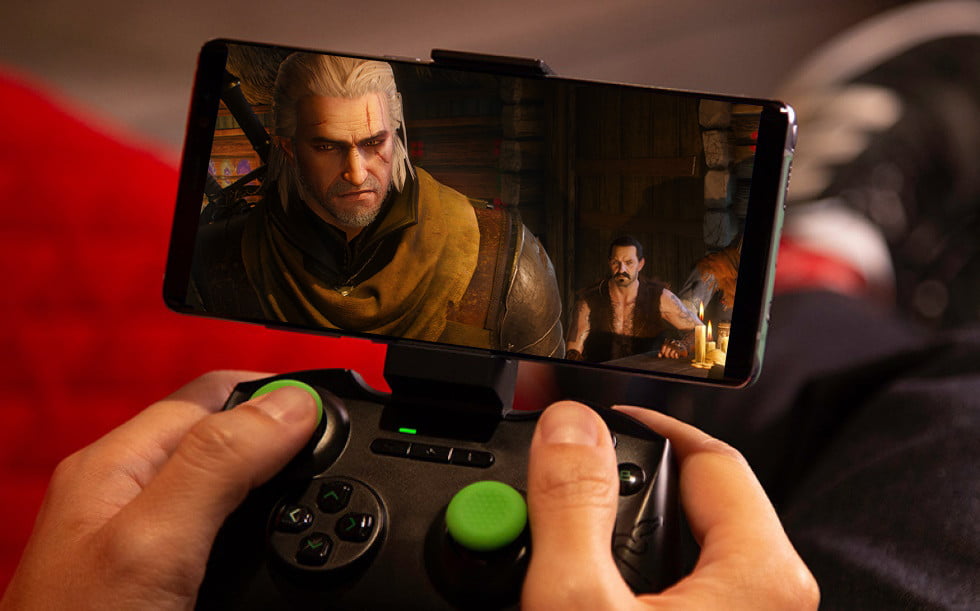A Nintendo Switch killer may be in the works … or another attempt at one, at least. Ars Technica reports that Valve is working on a portable console code-named SteamPal.
Details on the rumored project are a little hazy. Ars Technica says that multiple sources confirmed that the hardware has quietly been in development for a while now. That report was backed up this week when SteamDB operator Pavel Djundik found references to the device in a Steam update.
Valve is possibly working on a handled Steam console called "SteamPal" (codename Neptune).
Beta client update added plenty of references including controller bindings, new UI strings such as quick access menu, system settings (airplane mode, wifi, bluetooth) and a power menu. https://t.co/BwDWjWWb06
— Steam Database (@SteamDB) May 25, 2021
Supposed prototypes of the device have been compared to the Nintendo Switch, though there aren’t exact details on if it would function the same way.
Valve wouldn’t be the first tech company to try its hand at a Switch clone. At January’s CES show, Alienware unveiled its own take on the Switch. The prototype imagines what a portable Alienware console would look like — and no, it’s not a laptop. It’s a full handheld machine that looks about as bulky as Nintendo’s Wii U gamepad. Multimedia company Qualcomm is reportedly working on its own version as well.
It makes sense that companies would try to make lightning strike twice. A simple Nintendo Switch clone is only a short-term plan, though; the Switch console itself is already a stopgap solution.
The portable race
When the Switch launched in 2017, it was a totally fresh concept. The idea of playing console-quality games on the go seemed like magic. But technology moves fast nowadays, and that’s apparent when looking at the Cloud gaming experiments that followed the Switch’s launch. Services like Google Stadia took the idea of the Switch one step further by allowing players to stream more powerful games on the devices they already own. For example, I’ve played Destiny 2 on a deeply out-of-date iPad via Stadia and it ran smoothly.
The Switch was another moment where Nintendo was moving sideways while its competitors were moving forward. Rather than trying to create a tech powerhouse, it found a new idea and carved out a space. That’s how the company has consistently found ways to reinvent itself and stay relevant as companies like Sony and Microsoft shoot ahead in the tech race.
Nintendo’s innovations are rarely the best implementation of its ideas, though. The Wiimote was an ingenious control scheme for the moment, but one that was a steppingstone toward a longer-term vision: Removing the need for controllers entirely. Sony most notably tried to copy Nintendo’s homework with the PlayStation Move controllers, but it saw middling returns (the controllers are being phased out entirely for Sony’s next VR headset). Why would someone want to buy a Wii clone when the Wii already existed?

That’s the same dilemma that’s going to face companies like Valve if they try to simply repeat the Switch’s success. Even four years into the Switch’s life span, it’s easy to see how needlessly complicated the device will look in retrospect once we’re able to play any game on the phones we already own. If Valve launches a portable device in the next few years, it won’t be competing with the Switch; it’ll be fighting with companies like Microsoft who are offering that games via the cloud. The only difference is that those companies aren’t charging hundreds of dollars for a new piece of tech.
There’s always a chance that something like the SteamPal could work. After all, gamers remain skeptical of cloud gaming — and for good reason. The technology’s reliance on high-speed internet connections makes it a nonviable option for many people outside of a major city. By comparison, the idea of a mini computer that can consistently play games is still appealing. Granted, we’re not even sure if that’s how it’ll work. It could wind up being a peripheral designed for Valve’s own cloud gaming service for all we know.
At this point, it’s a race to the finish line. If the supposed SteamPal launches before cloud gaming can improve, Valve could capitalize on a trend just in time. On the other hand, if companies like Microsoft fix the tech’s biggest pain points, the entire concept of the Switch will start to feel outdated. If Valve is going to make a power play, it needs to act fast if it wants to stop the SteamPal from becoming the next Steam Machine.
Editors’ Recommendations

